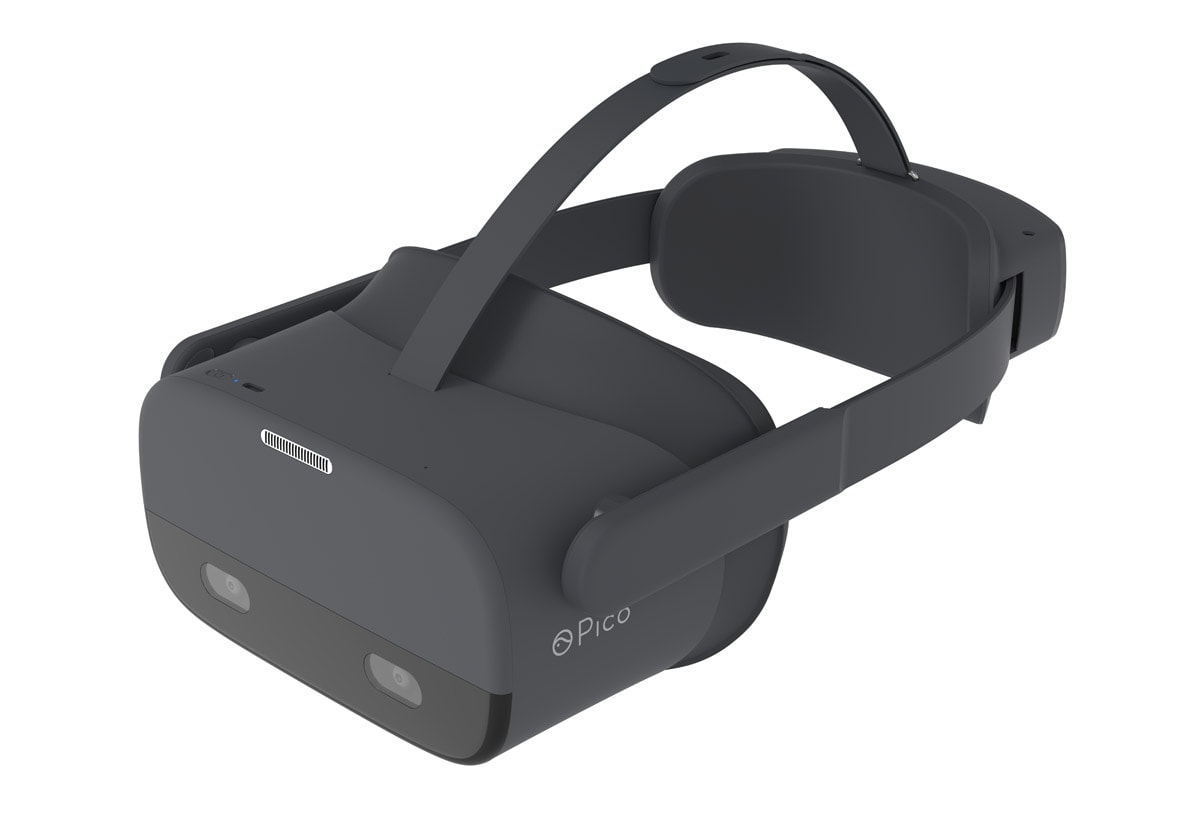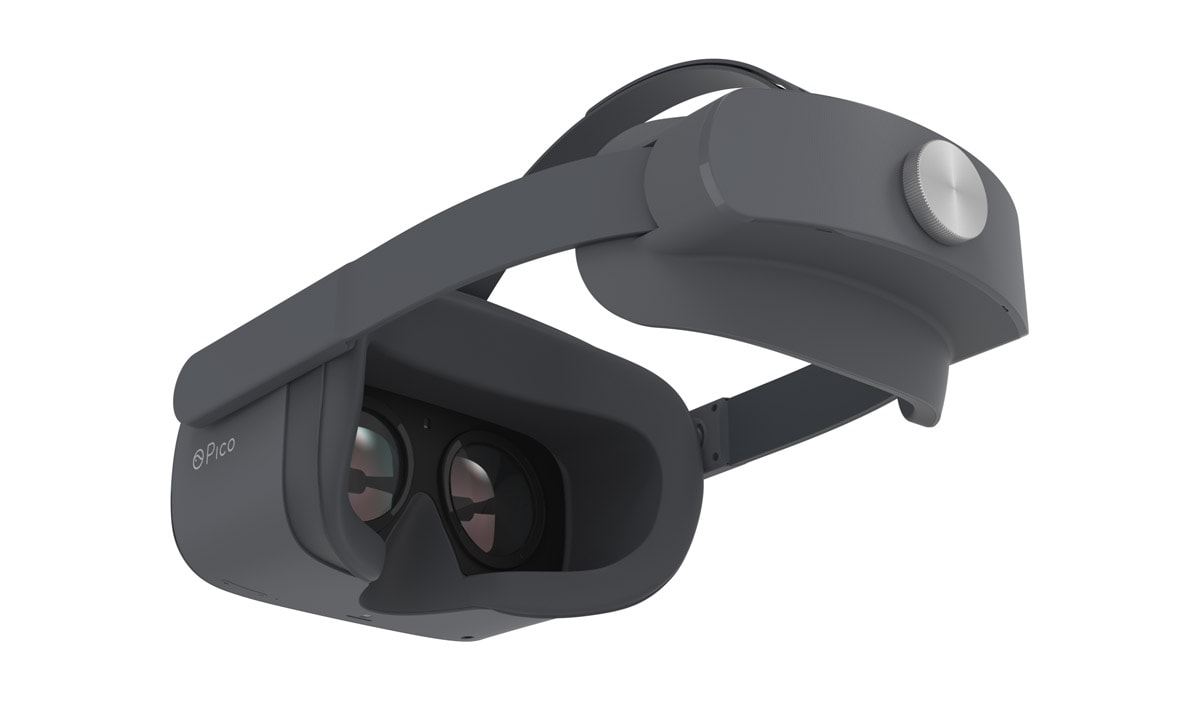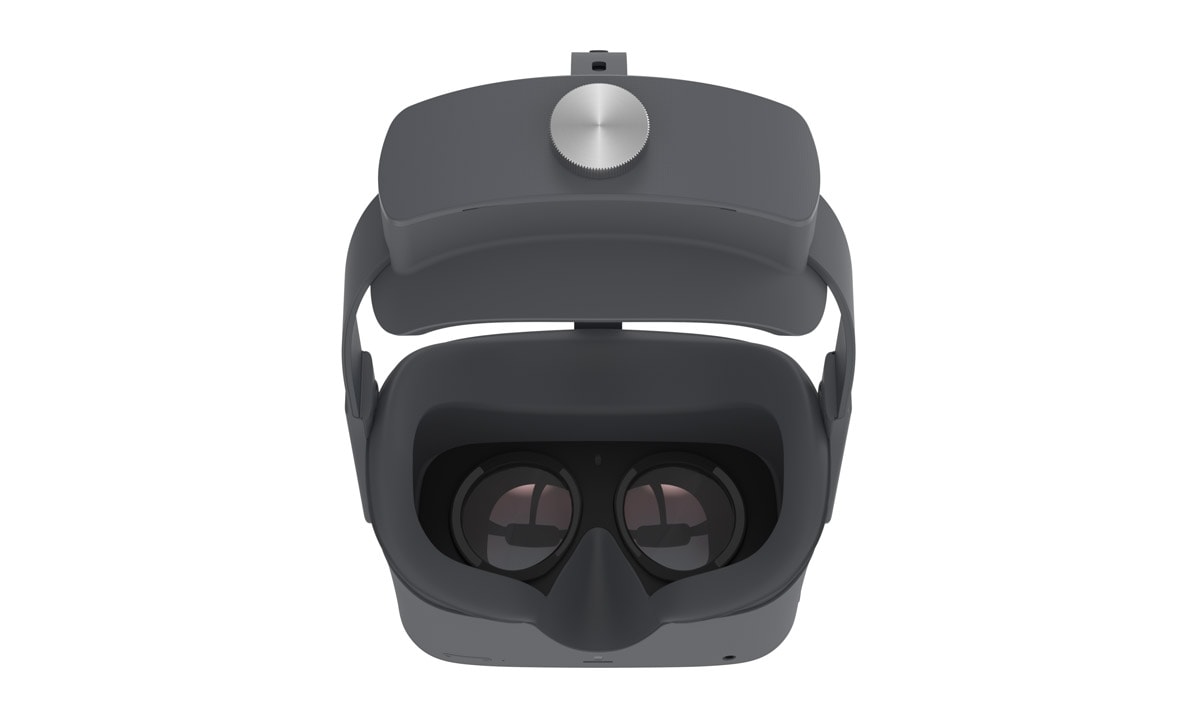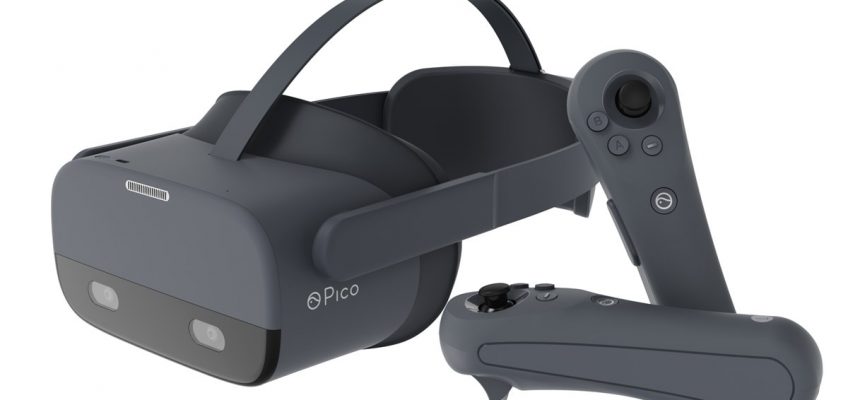Enterprise-level Tobii eye-tracking and foveated rendering at an affordable price.
The newly launched Neo 2 & Neo 2 Eye headsets from Pico Interactive are lightweight, untethered, deliver 4K, and look most like a beefed-up Oculus Quest. “Great!” I can hear VR enthusiasts and gamers around the world exclaim, but hold your horses. Closer inspection reveals these headsets are very definitely industry-only, at least for now.
To be fair, Pico never said otherwise, and that doesn’t mean the package doesn’t present a value proposition for developers, and maybe a teaser of what that big consumer headset we are all waiting for will look like.
The newly launched @PicoInteractive Neo 2 & Neo 2 Eye headsets from Pico Interactive are lightweight, untethered, deliver 4K, and look most like a beefed-up Oculus Quest Share on XCompatible with a wide variety Android peripherals, the Neo 2 features a comfortable and hygienic all-PU facial interface. A unique counterbalanced design allows for extended use, with plenty of room for prescription glasses. There’s also an SD slot for expanding memory and adding additional content.

Pico’s Neo 2 line includes two headsets: the Neo 2 and the Neo 2 Eye. Both are all-in-one (AIO) devices with 6 degrees of freedom (DoF), head and magnetic controller tracking, wireless & wired streaming from a PC, spatial stereo audio, and BT 5.0 compatibility. The slightly more expensive Neo 2 Eye offers integrated Tobii eye-tracking and foveated rendering powered by their Spotlight Technology. This system scans your eyes 90 times a second and uses your own retina position for cursor control.
Quality eye-tracking in an untethered headset is a big deal and enables companies to follow and learn a customer’s in-app behavior, enhance training efficiency, and improve productivity Share on XQuality eye-tracking in an untethered headset is a big deal and enables companies to follow and learn a customer’s in-app behavior, enhance training efficiency, improve productivity, and possibly increase user safety in busy, shared work environments. Along with the eye-tracking comes dynamic foveated rendering, another big deal for a high resolution untethered headset. This translates into improved battery life through refined graphics performance, reducing shading load in some applications by up to 72% while increasing the possible frame rate by a supposed 66 percent.
“Over the last two years, we have seen Tobii eye-tracking become a foundational technology that makes XR devices better and improves the user experience,” said Anand Srivatsa, Division CEO of Tobii Tech. “It is fantastic to partner closely with Pico on the extraordinary Neo 2 Eye and to enable enterprise and professional users to unlock greater operational efficiency, provide powerful user insights, enhancing training, simulation and product development capabilities.”

Pico Neo 2 Specs:
– Display: 4K resolution, 101 FOV, 75 Refresh.
– Components: 845 Snapdragon, 128 GB Storage, 6GB RAM, Micro SD Card Slot.
– System/SDK: Android8.1/Pico XR SDK/Qualcomm XR SDK.
– Design: 2 Electromagnetic Controllers (6 DoF), Hygienic Replaceable PU Face Inserts.
– Weight: Less than 340g without a headband, Counterweighted Battery for Maximum Comfort.
– Audio: Integrated Spatial stereo speaker, Dual Mic EC/NR, 3.5mm Jack.
– Connectivity: USB-C, BT 5.0, Wi-Fi 802.11a/b/g/n/ac, 2X2 MIMO Dual Antenna.
Using Qualcomm’s 845 Snapdragon processor with Boundless XR, the Neo 2 also allows content streaming from a VR-ready PC and existing PC VR platforms over wireless 2X2 MIMO 802.11ac 5G link with a common MIMO 5G router. I was also pleased to see they also integrated Firefox Reality and Hubs by Mozilla. Firefox Reality is an open, accessible, and secure browser built specifically for mixed reality (including WebXR support) to create a better immersive web browsing experience. Mozilla’s Hubs allows users to collaborate online around virtual objects, spaces, and tasks – all without leaving their headsets.
Using Qualcomm’s 845 Snapdragon processor with Boundless XR, the @PicoInteractive Neo 2 also allows content streaming from a VR-ready PC over wireless 2X2 MIMO 802.11ac 5G link with a common MIMO 5G router Share on XBefore I get into how the Neo 2 Eye performed during my hands-on, it is important to address the inevitable comparison with the game-changing Oculus Quest as all my feedback – both good and bad – is framed around that comparison. To be blunt, the Neo 2 feels like a Quest with upgraded hardware and capabilities. However, when you first start it up and are presented with a Quest-like environment and menu system, it quickly becomes apparent that the Neo 2 isn’t the most consumer-friendly headset. But that is only because the available content is not there – yet.

While the Quest may feature less powerful hardware, the content and software are what makes the device so damn user-friendly. It’s incredibly easy to jump in and start having fun. The Neo 2, on the other hand, is marketed as an enterprise headset, and while I have no doubt it would serve as a fantastic platform to build 4K resolution apps that can make the most of its impressive eye-tracking, rendering, and connectivity, the low-quality software and demos that are now available make the headset feel like a letdown when compared to the Quest. Most of the Neo 2 apps aren’t even in 4K, so apart from the menus, most of the content looked visually underwhelming.
the @PicoInteractive Neo 2 Eye is a very exciting, professionally supported, blank slate. It's an evolutionary step forward in untethered VR headsets on to which companies can build their own technology. Share on XI was disappointed that Pico sent this for a review missing any preloaded software, links, or instructions to demo apps that might have exposed the true capabilities of this impressive headset. But that frustration aside, the Neo 2 Eye is nothing to be dismissed, as it is clearly a very exciting, professionally supported, blank slate. Essentially, it’s an impressive evolutionary step forward in untethered enterprise VR headsets on to which companies can build their own technology.

“Few non-tethered headsets offer this level of visual quality, design and support,” said Henry Zhou, CEO of Pico Interactive. “We’re focused on ‘user first’ in all sense of the term and are constantly looking for ways to improve our product offering,” he added.
I did come across a few hardware niggles in my testing that might present an issue for some. For instance, there is no manual IPD adjustment, and I could not find the digital one in the settings. This was a persistent annoyance and it made me feel a bit like my head was stuck inside a glass jar, with my vision compressed slightly on both sides. If IPD adjustment is digital, however, this issue could be addressed by software updates so might not be a deal-breaker as the product rolls out.
Both the controllers and the headset are ‘functionally’ designed, which means they are bulky and practical while not being ugly. They are hard-wearing and meant for constant heavy use, but it is worth noting that after 30 minutes I did start to feel some discomfort, specifically in my cheeks and ears.
The battery is part of the adjustment strap, and the fact the weight is at the back of the head counterbalances the screen at the front nicely. I didn’t notice any neck strain at all while using the @PicoInteractive Neo 2 Eye Share on XOn the plus side, the battery is part of the adjustment strap, and the fact the weight is at the back of the head counterbalances the screen at the front nicely. I didn’t notice any neck strain at all while using the Neo 2 Eye. The padding is also composed of a super hygienic design that is comfortable, easy to clean, and replaceable.

USB-C charging ports on the controllers and headset are practical and the firmware updates were quick and easy to install. The easy-access SD card slot will be a real time-saver for software testing or the quick swapping of demo content in a sales environment. All around the Neo 2 Eye is a practical solution for businesses, not a toy or gaming device.
When you consider that the Oculus Quest for business platform costs roughly $1000, the @PicoInteractive Neo 2 models actually offer more bang for your buck Share on XI have read some criticism of the high cost of the Neo 2 and the Neo 2 Eye, but as an enterprise solution, they offer great value for companies seeking a sturdy, visually-impressive headset that’s easy to use in a busy work environment – from a shop floor to an architectural office. When you consider that the Oculus Quest for business platform costs roughly $1000, the Neo 2 models actually offer more bang for your buck.
The Neo 2 is now available for purchase at $699 USD and the Neo 2 Eye for $899 USD. More information on both headsets is available here. As Pico focuses on enterprise, these headsets are only sold directly to companies via a dedicated sales team spread across the globe, including offices in San Francisco and Barcelona. For more information visit Pico Interactive.
This article originally appeared on VRScout.
Pico Neo 2 Eye Review: Untethered 4K VR In A Tidy Little Package via @R3Digital https://t.co/5qrpKKpQea pic.twitter.com/zhBOFywT7L
— VRScout (@VRScout) August 5, 2020
Tech Trends offers a broad range of Digital Consultancy services to guide companies, individuals, and brands in effectively leveraging existing and emerging technologies in their business strategy.









